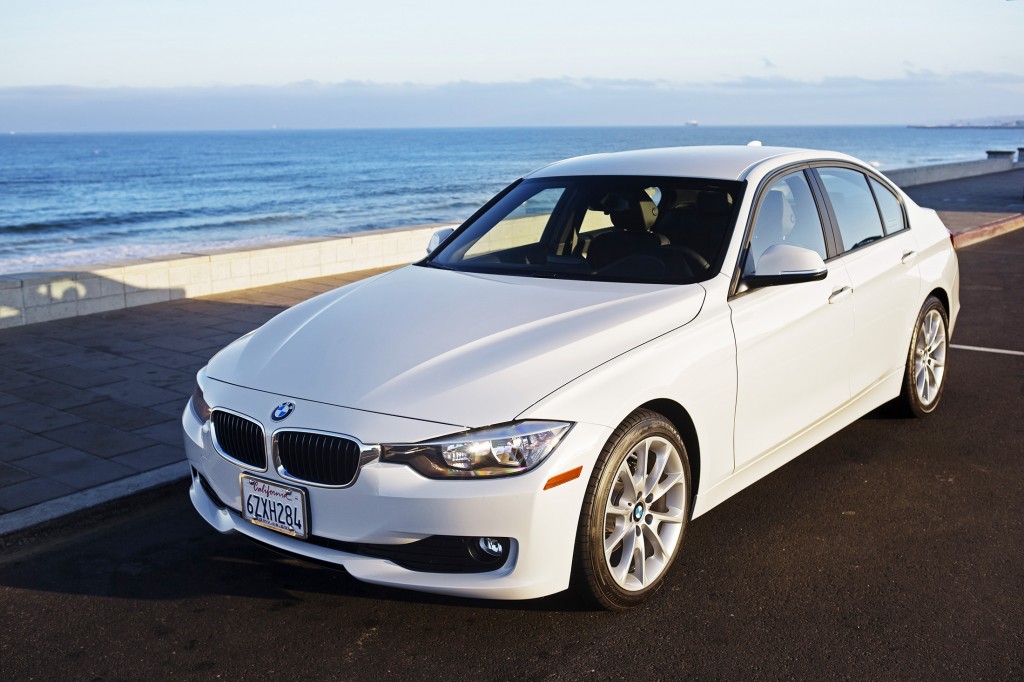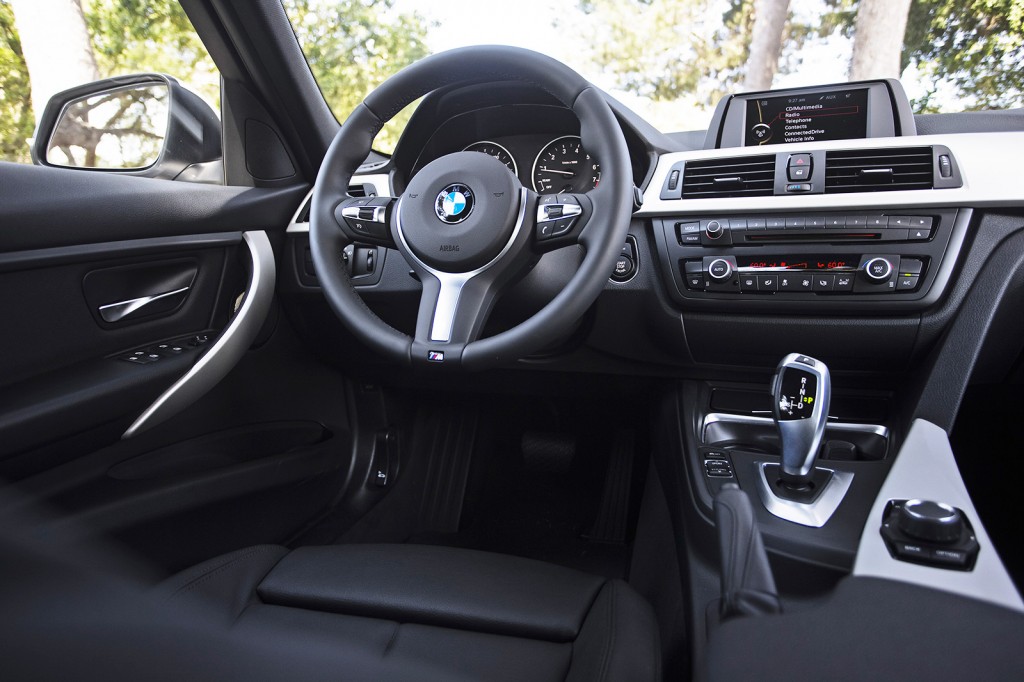Automotive Writer
The car occupying that entry-level rung, the 320i, is a BMW that has been stripped of some horsepower and equipment to meet a price of $32,750, which has become bargain-basement territory for the German performance brand.
The result is a car that, while lacking the monumental power of its 328i and 335i siblings, is still deeply satisfying to the right kind of driver. It’s more of a purist’s BMW, in a way, and I like that about it.
Output from its 2.0-liter turbocharged four-cylinder engine is 180 horses — 60 less than in the $37,300 328i — but the power drop in the detuned engine is mitigated by the fact that it makes big lumps of torque across a wide spectrum of the rev range.

The 320i is the bargain-priced version of BMW’s iconic 3 Series. Its turbocharged engine makes 180 horsepower and, more importantly, 200 pound-feet of torque.
In other words, it’s a car that still feels fast.
Thanks to all that torque available at low RPMs, it has plenty of pulling power, something especially noticeable when routed through a manual transmission like in my test car. You can put it in sixth gear and bury your foot on the gas pedal to feel that freight-train torque pull you forward. Or you can very easily launch it in second gear, if you want to be silly.
Ultimately, though, it’s the suspension that makes the 3 Series so richly rewarding from the driver’s seat.
Car companies around the world have tried to copy the 3’s rear-wheel-drive handling finesse with mixed results. While a few have come close, no one has yet been able to precisely mimic the BMW magic to date.
This car plants itself so nicely in corners, is so easy to control with the throttle, transmits so much feedback to the driver and yet is still so comfortable to drive on the highway when it straightens up, it’s no wonder the 3 Series remains the global benchmark for sports-sedan handling.
One, I was a little surprised that a rear-view camera isn’t standard equipment on a $33,000 car. That’s something that’s become commonplace on cheaper cars, but you’ve got to pay an extra $950 to get it as part of the “Driver Assistance Package” on the 320i. The equipment downgrades on the 320i make the 328i considerably more appealing.
Two, the silver-coated trim in my test car didn’t seem all that durable or upscale. I love everything else in the cabin, but that silver, plasticky trim didn’t do it for me.
And three, it turns the engine off when you come to a complete stop to save fuel, but it feels a little rough when the engine starts back up. It’s not as silky smooth of a restart as you’ll find in many eco-minded (and admittedly less powerful) cars such as the Chevy Volt and Toyota Prius.
Honestly, though, that’s getting pretty picky about what I think is a spectacular car to drive — even with the less powerful engine.
In the end, you don’t buy cars like this for the cabin trim, the rear-view cameras or because you want to save gas. You buy a BMW because it feels incredible over the road, and that’s what the 320i does best of all.
At a Glance
What was tested?
2014 BMW 320i ($32,750). Options: Sport package ($1,300). Price as tested (including $925 destination charge): $34,975
Wheelbase: 110.6 in.
Length: 182.2 in.
Width: 71.3 in.
Height: 56.3 in.
Engine: 2.0-liter turbocharged I-4 (180 hp, 200 lb.-ft.)
Transmission: Six-speed manual, eight-speed automatic
EPA Mileage: 24 city/36 highway
RATINGS
Style: 10
Performance: 7
Price: 7
Handling: 10
Ride: 8
Comfort: 7
Quality: 8
Overall: 9
Video Review:
2014 BMW 320i
http://bit.ly/2014320i
Why buy it?
The ample, easily accessible torque means even this lowest-powered 3-Series is a strong performer. It feels amazing over the road, remaining the benchmark for how sporty four-door cars ought to handle.

